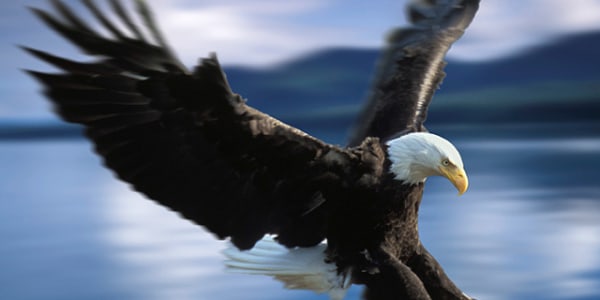He lets out a piercing howl that slowly penetrates your chest. To human ears, it's the sound of being alone. And the creature who made the cry probably is.
The locals call him Romeo. He's a black wolf without a pack, a wild canine who's often seen patrolling Juneau's Mendenhall Glacier, the state capital's signature recreation area.
Romeo baffles area biologists and naturalists with his refusal to find a pack or a mate, choosing instead to return each winter, clearly at ease with humans walking within a few hundred yards.
He's typically been seen during a six-month stretch starting in late November when the glacier's lakes begin to freeze.
As predators go, he's gregarious, but when he reveals sharp fangs set against a pair of copper eyes, it's clear that he's still part of Alaska's wildlife.
Romeo feeds primarily on beavers, snowshoe hares, ptarmigan, grouse and even salmon still lingering in the park's streams in the late fall.
Age estimates, driven in part by his thick, graying snout, put Romeo at about 8 years old, and he's been part of Juneau's wintertime lore for six of them.
Stories behind Romeo's arrival and how he got his name drive his mystique each year. The prevailing story dates to April 2003.
A pregnant female wolf was found dead about one-quarter mile from the glacier's visitor's center. The wolf was stuffed, mounted in the center, and named Juliet.
Six months later, Romeo's first howl could be heard, leaving some to wonder if the male was longing for the female, possibly his mate.
Over the course of that winter, well into early 2004, the first regular sightings of Romeo had occurred.
Known as an Alexander Archipelago species of a gray or timber wolf, Romeo is as much a part of winter in Juneau as cross-country skiing and snowshoeing.
Slideshow 18 photos
Amazing Alaska
Sometimes he's walking casually. Other times, he seems to be taking in a rare sunny day just lying in the middle of the frozen lake.
Romeo walks with strides that are as graceful as they are strong, leaving trails of paw prints the size of some adult human hands, a stark reminder that he's a wolf, not a stray dog.
He's as curious about us as we are of him, and seems to seek the company of people walking their dogs. Spotting a potential canine friend from hundreds of yards away, he runs, bounding toward another dog, then shows a polite restraint, sometimes retreating in a backward dance.
As night falls — occasionally with fog settling on the ice and reducing Romeo to a dark outline — the howl emerges.
As sad as it sounds, his cries are an assurance that Romeo is not far away.

